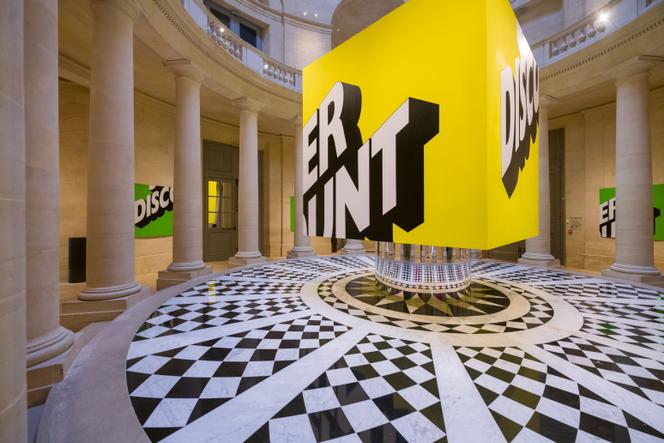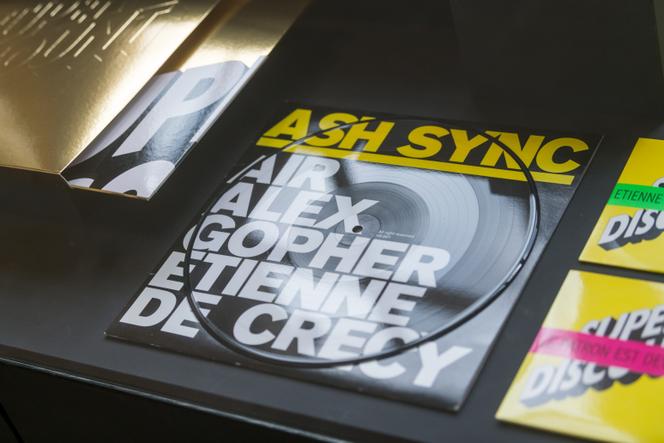


In the 1990s, Versailles became the breeding ground for the French touch. The exhibition "H5: See the French touch," ("H5: Voir la French Touch") hosted at the Espace Richaud, located in the city, until May 5, and led by the graphic design studio H5, delves into this electro music movement through the lens of its graphic designers, who have contributed to the visual identity of numerous artists from Versailles. At the time, teenagers from the Hoche or Jules-Ferry local high schools became friends and made music together: Phoenix, Etienne de Crécy, Air, and Arnaud Rebotini. Several explanations are put forward to explain this Versailles tropism, such as boredom or the rectilinear nature of the city's alleyways. Instead, and "above all, it's the convergence of a new technology – the home studio – and the creativity of young friends," said Ludovic Houplain, co-founder of H5.
A reproduction of the door from H5's first Parisian studio, adorned with stickers, is featured in a corridor of the exhibition; a door that's been pushed by a plethora of figures from the French touch. "Etienne de Crécy's studios were downstairs. In the window opposite was DJ Falcon's apartment, where the Daft Punk helmet was fitted and shot," Houplain recalled.
The one hundred and sixty album covers by H5, displayed side by side in corridors, provide a glimpse into the aesthetic of this French touch, whose imagery is not uniform. Through its clean and geometric graphics, the studio shapes the signature of Etienne de Crécy, Air, or Alex Gopher.
The juxtaposition of posters, created between 1996 and 2023, helps us to understand the visual grammar of these album covers. The manufacturing conditions were often artisanal. Symbols of consumer society are used ironically in their creation. The sky-blue cover of Cosmo Vitelli's album We Don't Need No Smurf Here (Disques Solid, 1999), for example, takes the form of an instruction manual for a household appliance. Another ingredient of H5 album art is the absence of artist photographs. At the time, anonymity was all the rage.

The H5 label is also expressed through its music videos, projected in one of the exhibition's rooms. Alex Gopher's The Child (1999), in which a city is represented by animated typography, gave rise to Logorama (2009), the Academy Award winner for Best Animated Short Film in 2010. "Today, we have to design clips for a multitude of channels. Before, clips were designed for the one single channel: MTV," said Houplain.
You have 26.78% of this article left to read. The rest is for subscribers only.
